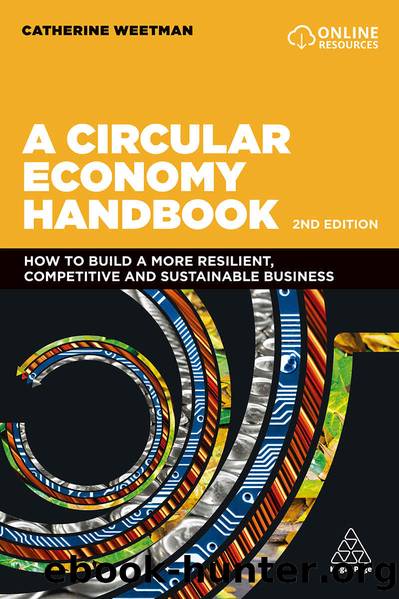A Circular Economy Handbook by Catherine Weetman

Author:Catherine Weetman
Language: eng
Format: mobi
Publisher: Kogan Page
Published: 2020-11-02T18:30:00+00:00
Renewable inputs
Whilst fibres from cotton, wool, linen and other plant or animal sources are renewable, pressure on land use, and the environmental impacts of production, undermine their suitability for a truly sustainable process. Wool can be a by-product from sheep meat production; however, over centuries, specific breeds of sheep, such as merino, were bred to provide wool fibres suited to clothing, thus producing high quantities of wool instead of meat. Natural fibres may also have mineral sources, such as asbestos â which does not meet our âsafeâ criteria for a textile fibre!
To minimize the use of land, we should follow a hierarchy of priorities for biomaterials, using agricultural or manufacturing waste flows, followed by post-consumer waste, then looking at crops that can grow on poor land, or perhaps from sustainable forests (harvesting some leaves, cork bark, etc) without displacing food crops.
Plant-based
Natural fibres produced using organic farming methods have lower environmental footprints. The Textile Exchange, a non-profit organization, has a website dedicated to organic cotton. It explains that cotton is often grown in water-scarce areas using irrigation, whereas organic cotton is 80 per cent rain-fed, which reduces pressure on local water sources.45 Organic farming does not use synthetic pesticides, meaning water running off the fields is cleaner and safer. Organic farming uses 80 per cent less energy and thus produces 80 per cent fewer GHG emissions. Organic fibres may be linked to food crops: cottonseed oil is used in a variety of food products and is also fed to livestock. Every cotton garment made by outdoor brand Patagonia, from 1996 onwards, is organic.
Improvements in natural fibres include hemp and other âbastâ fibres (plant fibres collected from the phloem, or outer skin of certain plants, such as ramie, hemp or nettle). Patagonia says it blends hemp with TENCEL® lyocell and organic cotton for superior strength and durability, creating a soft, lightweight and breathable material.
Camira, a UK textile company, uses nettles and hemp to make textiles for upholstery, health care, transport and domestic sectors. Camira highlights the inherent fire-retardant properties of its wool and bast fibre ranges, also including flax and jute recycled from coffee sacks. These need âno chemical treatments to meet the main contract and domestic flammability standardsâ.46
Choosing fibres that can be a co-product of food production helps make better use of land and production resources, and may reduce problematic waste at the farm.
Download
This site does not store any files on its server. We only index and link to content provided by other sites. Please contact the content providers to delete copyright contents if any and email us, we'll remove relevant links or contents immediately.
International Integration of the Brazilian Economy by Elias C. Grivoyannis(90826)
The Radium Girls by Kate Moore(11921)
Turbulence by E. J. Noyes(7935)
Nudge - Improving Decisions about Health, Wealth, and Happiness by Thaler Sunstein(7615)
The Black Swan by Nassim Nicholas Taleb(7010)
Rich Dad Poor Dad by Robert T. Kiyosaki(6399)
Pioneering Portfolio Management by David F. Swensen(6226)
Man-made Catastrophes and Risk Information Concealment by Dmitry Chernov & Didier Sornette(5921)
Zero to One by Peter Thiel(5685)
Secrecy World by Jake Bernstein(4643)
Millionaire: The Philanderer, Gambler, and Duelist Who Invented Modern Finance by Janet Gleeson(4374)
The Age of Surveillance Capitalism by Shoshana Zuboff(4209)
Skin in the Game by Nassim Nicholas Taleb(4161)
Bullshit Jobs by David Graeber(4094)
The Money Culture by Michael Lewis(4076)
Skin in the Game: Hidden Asymmetries in Daily Life by Nassim Nicholas Taleb(3929)
The Dhandho Investor by Mohnish Pabrai(3698)
The Wisdom of Finance by Mihir Desai(3650)
Blockchain Basics by Daniel Drescher(3506)
